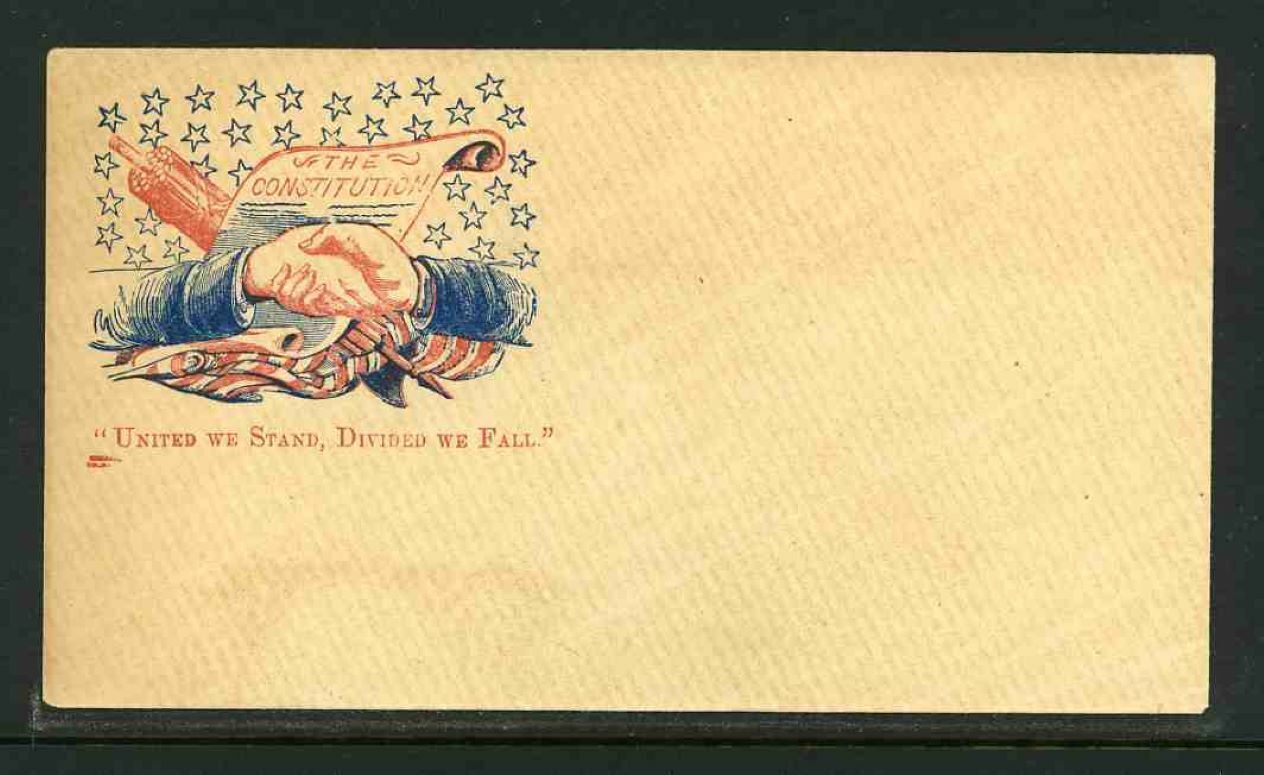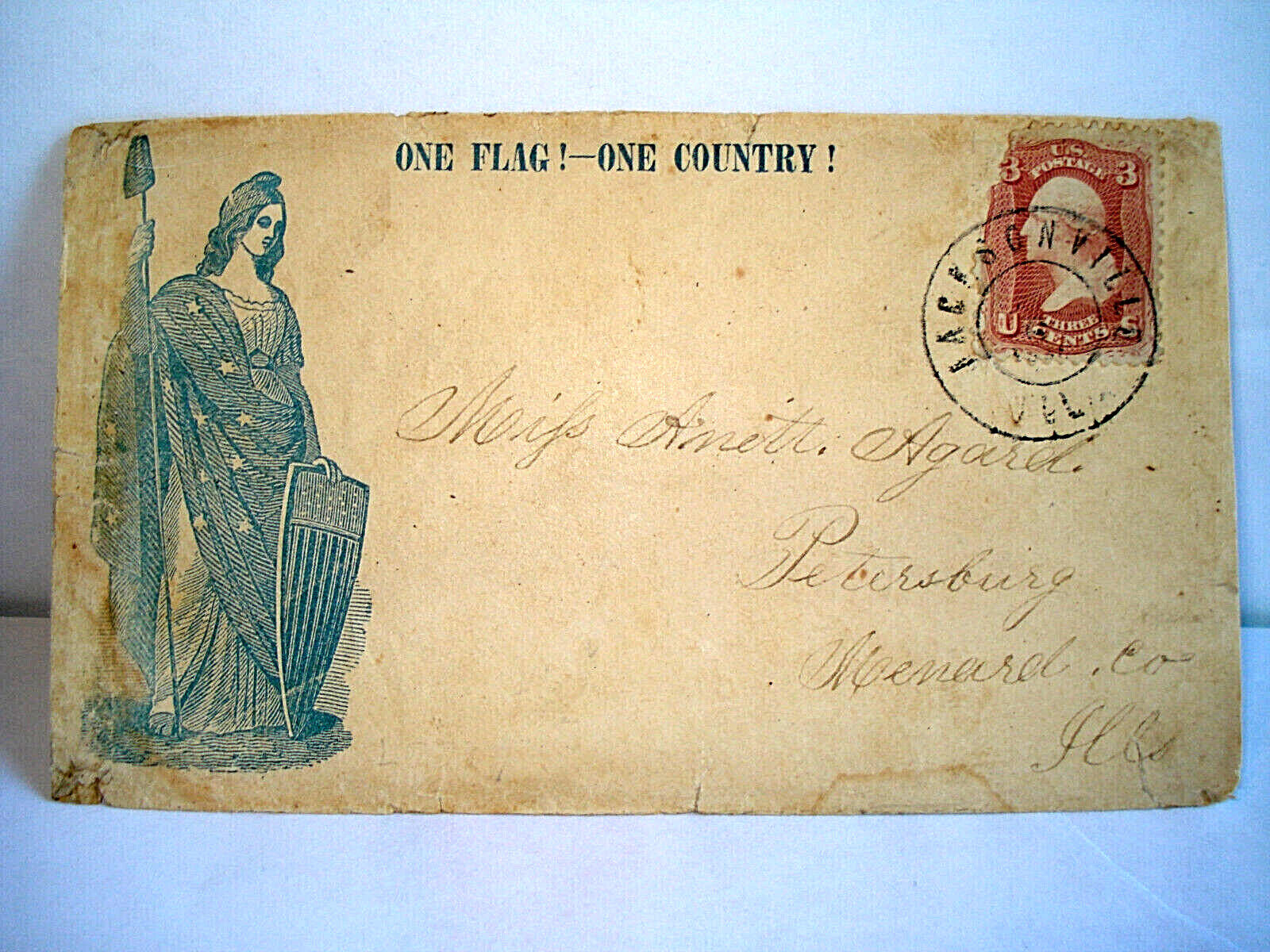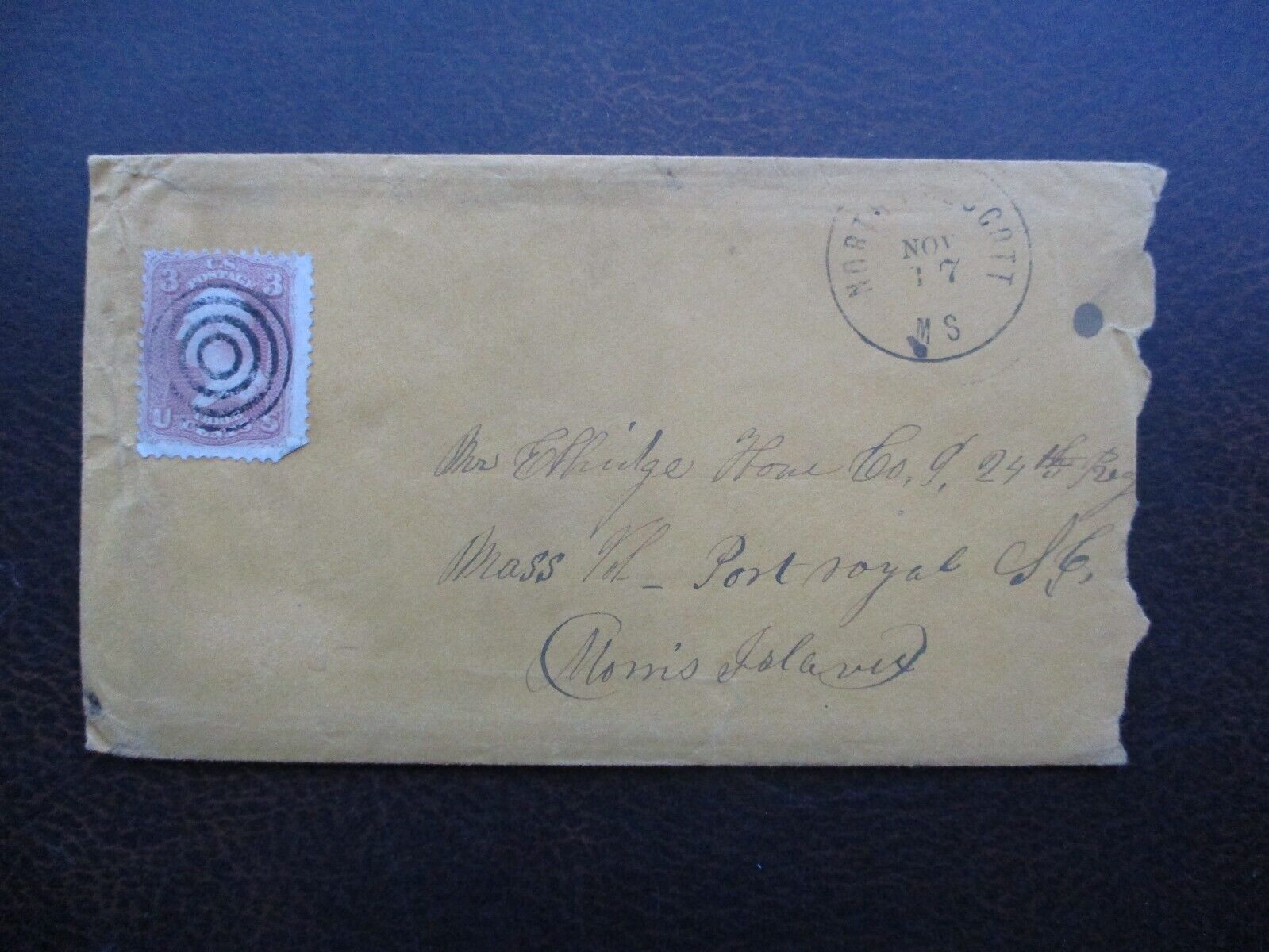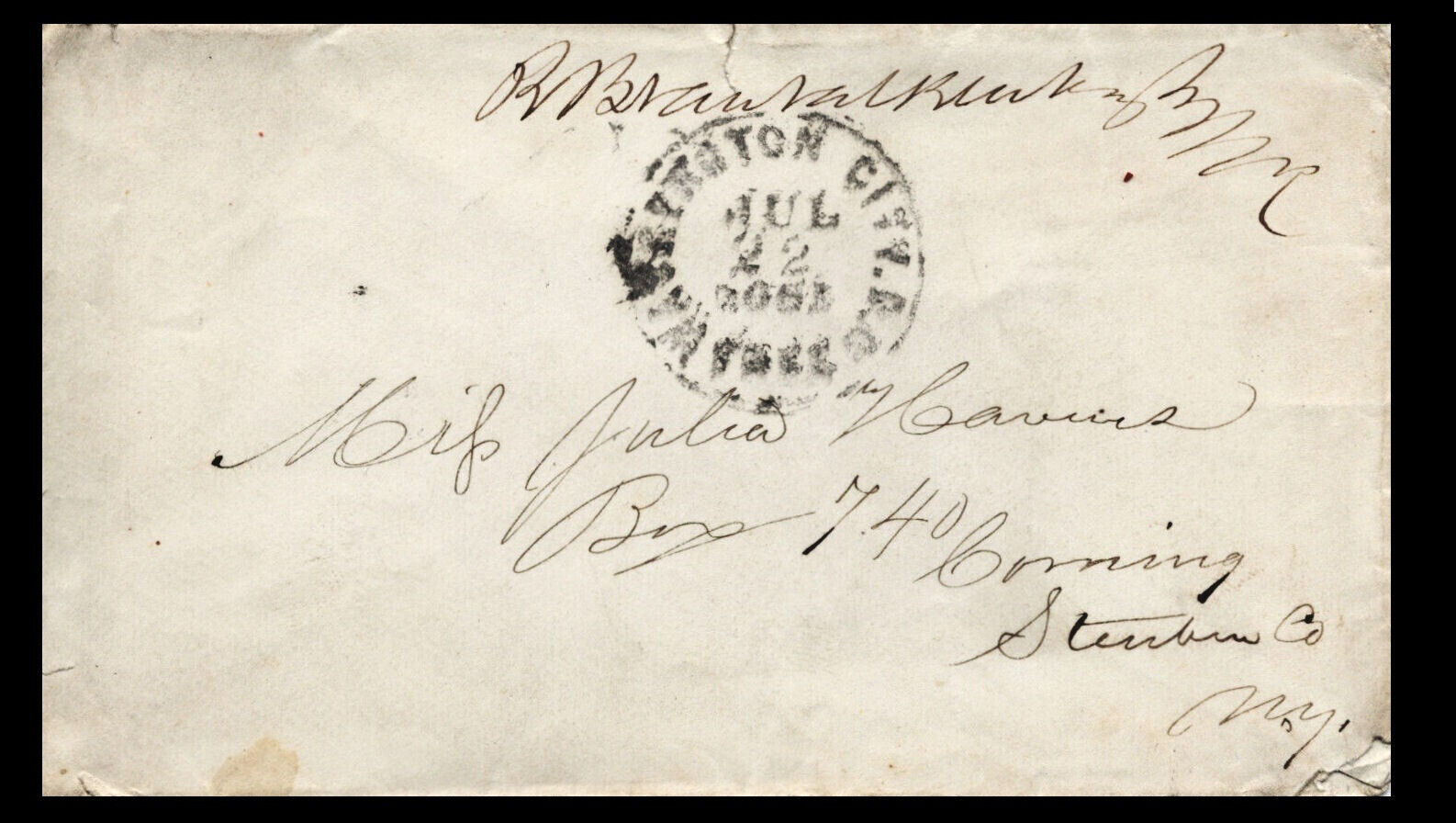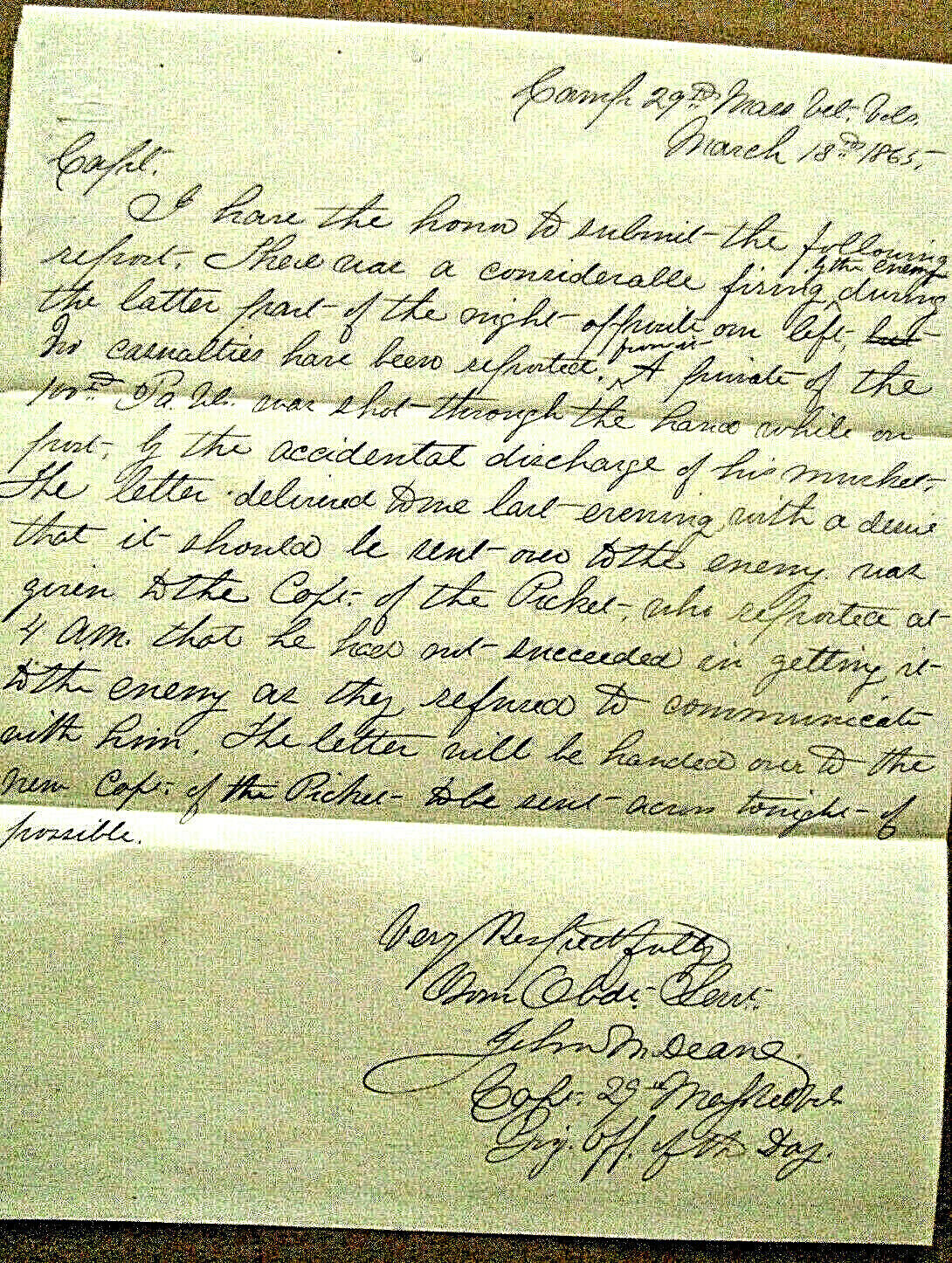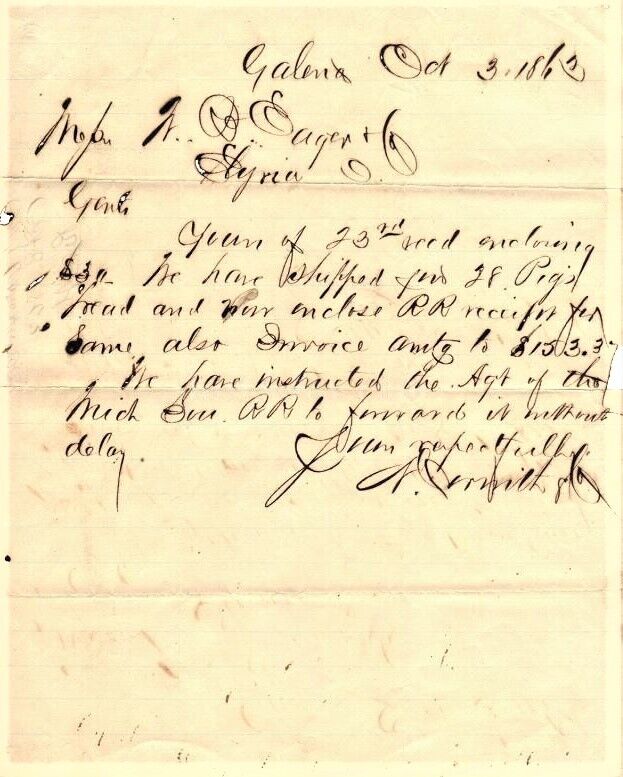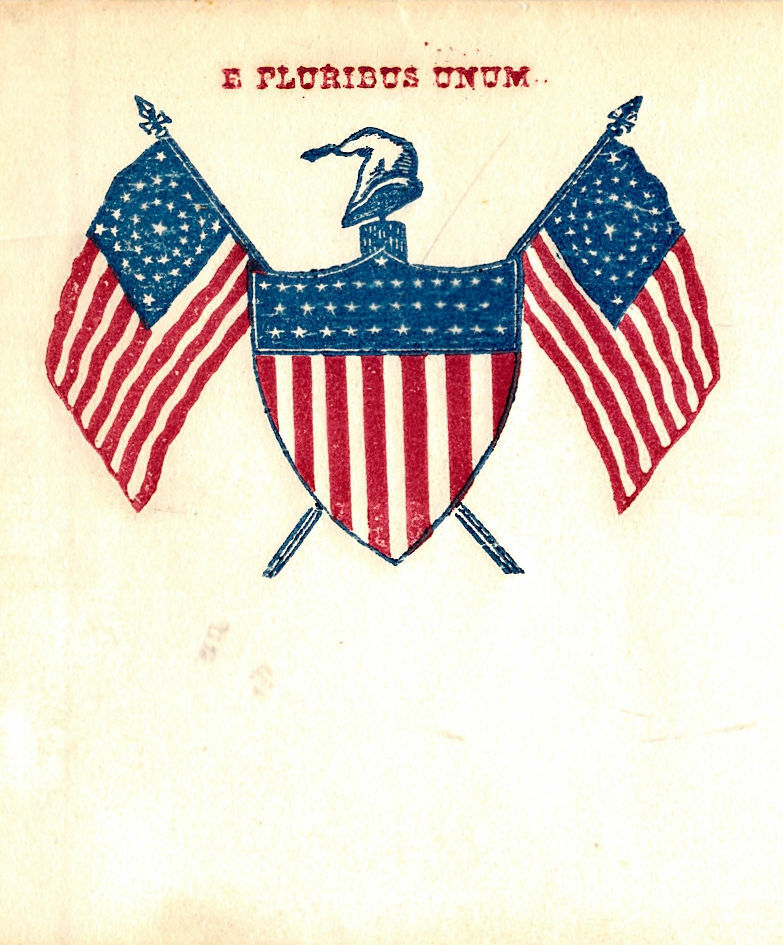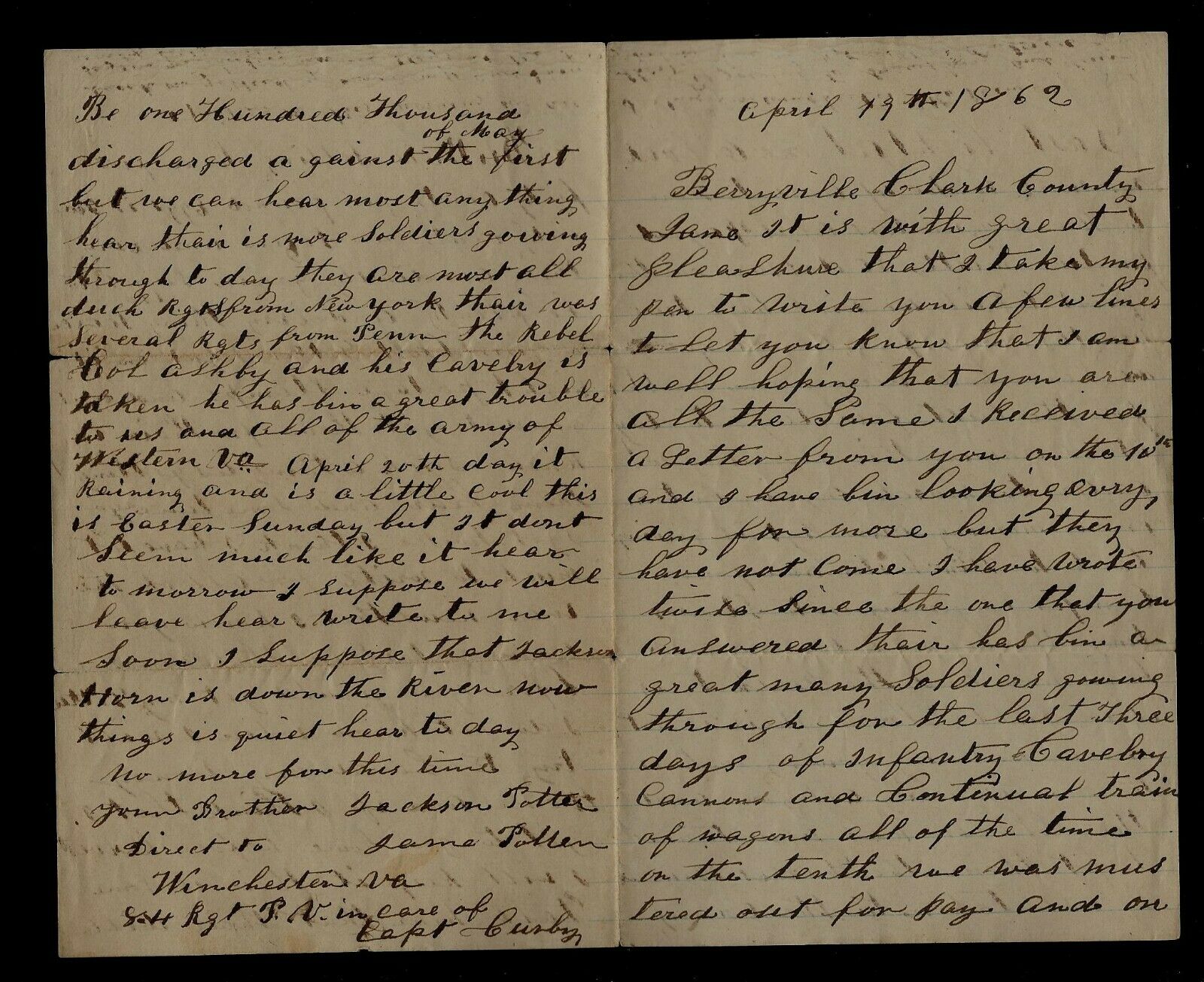-40%
CIVIL WAR LETTER - 131st Ohio Infantry - Great Description of Baltimore Shore !
$ 52.8
- Description
- Size Guide
Description
Civil War LetterCivil War Letter - Written by Soldier in 131st Ohio Infantry
This Civil War soldier letter was written by William Houser Gray (1847-1940), the son of Jacob Christman Gray (1812-1881) and Catherine Houser (1821-1897) of Piqua, Miami county, Ohio. William’s father was a contractor and builder. After the Civil War, William attended Denison University and then assisted his father in the construction business before taking a job with the Lake Erie & Western Railroad company as a civil engineer. He entered the lumber business in Piqua until 1871 and then turned to the life insurance business.
Earlier in the war, William worked as a hired assistant to Joseph Cahill, a sutler serving the 19th Indiana Battery in Tennessee during the summer of 1863. William's older brother
John H. Gray
served as a corporal in Co. D, 101st Indiana Volunteers.
This letter was written while he served in
Co. H, 131st Ohio Volunteer Infantry (OVI).
This regiment was mustard into the service at Camp Chase in May 1864 to serve 100 days to man the Federal forts in or near Washington D. C. while the veteran troops participated in Grant’s Overland Campaign. The regiment never saw any combat. They garrisoned Fort Marshall near Baltimore most of the time.
Transcription
Fort Marshall
May 23, 1864
Dear Friends at Home,
As I have a few spare moments at present I will write you the rest of my travels up to this place where I think we sill stay the rest of our hundred days and what makes me think so is that the Colonel has a stepson on General Lew Wallace’s staff and he told us that we were to put in the rest of our time here. I hope it is so for nicer quarters I never saw than what we have at present.
We are situated on Chesapeake Bay and joining the east part of Baltimore in a two-story frame house on the inside of the fort which of course is on a high hill. From the place where I sit now in my bunk, I can see 10 miles or more of nothing but houses and manufactories of every kind and I suppose that I could count 500 schooners and steamers. We have the best quarters in the whole regiment but it was a wonder that we got them as Co. A gets the best of everything that is a going and they are as mad as rip. We call them “calico yard sticks” for they are all storekeepers in Dayton. They have little shanties like those that were at Camp Johnson while we have a regular built two-story frame [house], all in one room. The bunks are on the sides and there is about 20 feet space left between them where we call the roll and drill when it rains so you see we have pretty nice times here.
We get pork, beans, bread & coffee, potatoes and rice. It is dinner time now and I will finish this P. M.
P. M. The streets of Baltimore are nicer and cleaner than the streets of Dayton. The houses are 5 and 6 story high made out of white marble. They look grand. The streets are said to be 10 miles long—that is, those that run east and west. But [I must] leave of describing the City of Baltimore for I could write 1,000 pages of fools cap about it and proceed on my journey from the place where we left at our last—standing on the railroad track 25 miles on the west side of Harper’s Ferry.
We started from there on the 21st of May at 4 P. M. for Baltimore. We traveled until very near dark when we struck the Potomac river about 1 mile from Harper’s Ferry, running past rock 50 and 100 feet above the cars and along the edge of the river which was 20 feet to the water. Now we strike the ship canal which runs around the rapids and from there into the city which John Brown took with a few men but had to give up and where our troops evacuated—and took [again], and evacuated again, and took again—and the ruins of the arsenal, which was a grand sight, and the trestle work pontoon bridges which extended across the Potomac river. Pontoons are made out of small boats with a wagon track over them. There are 75 boats in the bridge that I saw. They are fastened such a distance apart with the bow upstream and then fastened with large cables to the shore of Maryland and Virginia. It is a nice thing to see all the various things what are to be seen in nature and by the work of man and fire.
Now I will tell you about the railroad bridge that crosses at Harper’s Ferry. There was about quarter of a mile washed away in the last fresh and that was the reason why we had to live in the cars a week waiting for it to get finished. The bridge is 1 mile long made out of nothing but wrought iron bars, stayed and braced so it cannot fall but I tell you, 47 cars made it rattle about. The train that we had was that long—nearly two regiments strong on that train—and the locomotives stalled on it and had to wait until they could get up more steam. Everybody was afraid it would fall but I was lucky. If it had fell, I was right over the stone abutment and could jump off.
Across the river in Maryland I laid down on top of the cars and slept all night as sound as you please and when I waked up, I found that we were within 6 miles of Baltimore. That was at Elicott’s Mills. We arrived at Baltimore at 7 o’clock A. M. That was Sunday morning. Got out of the cars and marched up to the Market House, stacked our arms, piled our knapsacks, and then went up to the Soldier’s Home and got our breakfast and marched back to our guns and knapsacks, run over the city until noon and then got our dinners (at the same place we had our breakfast). Waited until we got orders and started for Fort Marshall which was about 4.5 miles from the Market House. Reached there in due time to get our bunks cleaned up and our beds made down. Slept well until morning, sound as you did I know.
Fort Marshall near Baltimore, Maryland, as it looked in 1863
There is 37 siege pieces of artillery, 4 mortars, and several small pieces on wheels, 12-pounders, and 6 magazines full of ammunition. There is piles of cannon balls as large as a good sized house just like they look in pictures. Send me some postage stamps.
Direct your letters to Wm. H. Gray, Co. H, 131st O.V.I. care of Captain H. C. Holl, Fort Marshall, Md.
TERMS
.00 postage in the United States. We accept Paypal.
Postage combined for multiple purchases. Please wait for me to send the invoice, otherwise you will pay a higher rate.
For International buyers, we utilize eBay’s Global Shipping Program. We had too many packages sent via the post office go missing. So we believe this program will be safer for us and for you.
We are members of the American Philatelic Society, the U.S. Philatelic Classics Society, the Confederate Stamp Alliance and the Illinois Postal History Society.
We only sell genuine, original letters (no copies or reproductions). Some of our letters have been transcribed and nicely presented for future genealogists and history buffs on the Spared & Shared blog.
We have been selling on eBay since 1998. BID WITH CONFIDENCE !



